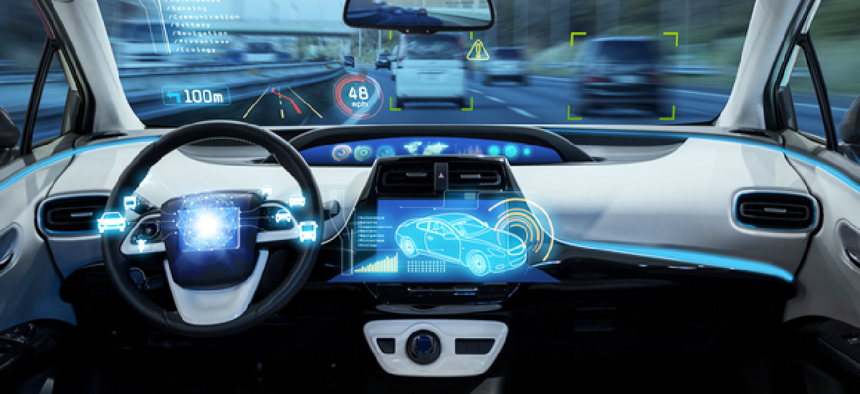DOT, industry discuss ways to share driverless car data


Connecting state and local government leaders
Meetings are underway to see if programs used for aviation safety could be a model for autonomous surface transportation.
Information sharing among private corporations and the government is always a touchy topic, as the common good of better data and insight gets balanced against concerns about competitive advantage, intellectual property and even accusations of collusion. The world of smart transit and automated vehicles is no different, but efforts are underway to create a workable model for sharing the data needed to make driverless cars a practical reality.
The first step, according to Department of Transportation officials, is to distinguish safety data from that used for traffic tracking, market research or other purposes.
"We need to talk very clearly about what sort of data we’re sharing, and by whom and for what," Nat Beuse, the National Highway Traffic Safety Administration's associate administrator for safety research, said at a June 2 Alliance for Transportation Innovation event. "I think if we’re going to have the public continue to walk and learn with us, they need to understand that all data is not equal."
Joe Kolly, NHTSA's chief safety scientist, said his agency is looking to the aviation sector for ideas on how to define, gather and share the necessary crash and safety data for autonomous surface transportation. After meeting with Federal Aviation Administration officials, Kolly said, he and his colleagues concluded that the Aviation Safety Information and Analysis Sharing program might be a good model.
ASIAS, he explained, "is an equal partnership between government and industry ... where the mission is to share information for safety analysis only." MITRE Corp., the non-profit that operates a wide range of federally funded research and development centers, serves as the "manager and middleman" for ASIAS, Kolly said, and that organization is now helping NHTSA to explore a possible version for self-driving vehicles.
The first exploratory meeting with industry stakeholders was held in May, Kolly said, and "it does appear that there's interest." MITRE is collecting feedback, which will determine next steps, he said. MITRE Technical Director Cheryl Croft, who was also at the event, agreed that "cautious optimism" came out of the meeting.
And while Kolly stressed that an ASIAS-type program is just one of many models being explored, he said such data sharing offers big benefits for the companies developing smart-car technologies. To assess the safety of any particular system, he said, "it’s going to take billions of miles and millions of hours to rack up any kind of exposure record."
"If you were able to share data and normalize it," he said, "Then an individual [company] could benchmark against the whole of the industry."
Other types of data sharing are important too, Beuse acknowledged, and on June 28 NHTSA is holding a workshop with the Federal Trade Commission to "explore all sorts of issues related to data and connected and automated vehicles." But safety data is critical, he said, and complicated enough on its own.
The next steps on a possible ASIAS-type program, Beuse and Kolly said, will center on questions of scope, funding and membership. At this stage, Kolly said, discussions have "just focused on benefits and drawbacks."
And while NHTSA sees real potential in the model, Beuse said, he cautioned against expecting too much too soon.
"The airline version of this thing," he reminded the audience, "took 25 years to build up to where we are now."
NEXT STORY: NASA approves three new drone studies




